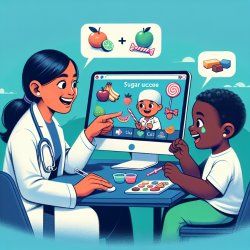Introduction
In the realm of child development and speech-language pathology, understanding the genetic underpinnings of conditions like autism spectrum disorder (ASD) is crucial. A recent study titled Chromosomal contacts connect loci associated with autism, BMI and head circumference phenotypes provides groundbreaking insights into how chromosomal interactions can influence phenotypic outcomes such as autism, BMI, and head circumference.
Key Findings
The study identifies significant chromosomal contacts within the 16p11.2 region, which are associated with ASD, obesity, and head circumference variations. These contacts reveal complex chromatin looping that affects gene expression and could lead to the observed phenotypes. The research highlights the role of chromosomal interactions in gene regulation, suggesting that disruptions in these interactions may contribute to ASD and related conditions.
Implications for Practitioners
For speech-language pathologists and other practitioners working with children, these findings underscore the importance of considering genetic factors when developing intervention strategies. By understanding the genetic and chromosomal influences on conditions like ASD, practitioners can tailor their approaches to better meet the needs of individual children.
- Personalized Interventions: Recognizing the genetic basis of a child's condition can lead to more personalized and effective interventions.
- Collaboration with Geneticists: Working closely with geneticists can provide a more comprehensive understanding of a child's developmental profile.
- Data-Driven Decisions: Utilizing genetic data can enhance decision-making processes, ensuring that interventions are evidence-based and targeted.
Encouraging Further Research
While the study provides valuable insights, it also opens the door for further research. Practitioners are encouraged to stay informed about ongoing genetic research and consider how these findings can be integrated into practice. By participating in or supporting research efforts, practitioners can contribute to the growing body of knowledge that informs best practices in child development and therapy.
Conclusion
The connection between chromosomal contacts and phenotypic outcomes offers a promising avenue for improving interventions for children with ASD and related conditions. By leveraging these insights, practitioners can enhance their skills and create better outcomes for the children they serve.
To read the original research paper, please follow this link: Chromosomal contacts connect loci associated with autism, BMI and head circumference phenotypes.










